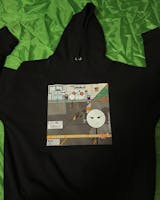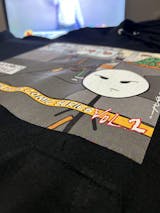Transfer printing is a printing method applied on a special paper or carrier. In this method, ink is transferred to other surfaces with the help of heat and pressure. This method is used to transfer visual or colored patterns onto a material. Transfer printing can be divided into different techniques and methods. These techniques include sublimation transfer printing, silk screen transfer printing and offset printing press transfer printing. In this article, we will provide comprehensive information about transfer printing.
What are the Types of Transfer Printing?
There are many types of transfer printing, which is a method applied with technological developments today. Below is information about transfer printing types:
Sublimation Transfer Printing: This technique is a printing technique that allows designs to be applied to many different materials. This method is applied using offset and digital printing. It allows the pattern on the paper on which the ink is applied to be transferred to polyester or polyester coated materials with the help of heat and pressure. In this way, patterns can be created on textiles, porcelain and similar materials.
Screen Printing Transfer Printing: This printing method is the application of patterns between 1 and 3 colors on a special paper. It is a printing technique applied on textile products and various materials by heat pressure method. This method is a preferred printing method to obtain the highest color quality.
Offset Transfer Printing: It is a multi-color printing technique using special transfer paper. Patterns designed especially for photo prints are printed on transfer paper with an offset printing machine. It is then used to increase the durability of these patterns and to transfer them to other materials. With the screen printing technique, back coating is applied with plastisol or water-based paints.
What is Transfer Printing Paper?
Transfer printing paper is a type of specially produced paper and has a very thin structure. This special paper is coated with wax and takes the image from the printer and is used to transfer this image to another surface. It usually transfers this image to the product to be printed with the help of high temperature.
When printing products on paper, the transfer printing method is generally preferred using high temperature. Unlike traditional ink, transfer printing uses a special ink that is transferred to the paper with a copper engraving machine that can only be used once. One of the features of this type of printing is that every desired color tone can be processed without interruption.
What are the advantages of transfer printing?
Transfer printing has many advantages over other printing methods. The advantages of this transfer printing method are:
- It provides a significant time saving compared to other methods such as wet printing.
- Supported by technological developments, this method allows you to achieve sharper and flawless details in prints.
- One of the most important advantages of transfer printing is related to time. Like other printing methods, there are no time losses such as touching or drying processes in transfer printing.
- With transfer printing, you can quickly print on fabrics.
- It is a method that can be used in a wide variety of textile products. It can be successfully applied on many products from sweaters to socks.
DTF transfer is also one of the transfer printing techniques. Therefore, it is applied with heat technique. Certain methods are used to use this technique. We also use this transfer method for your designs.
We have a team of experts in DTF transfer. We design this transfer method with special prints for you and offer it to your use. You can also print the designed transfer paper on your clothes. We closely follow applicable best practices and local regulations. Contact us and let us fulfill your DTF transfer needs.









